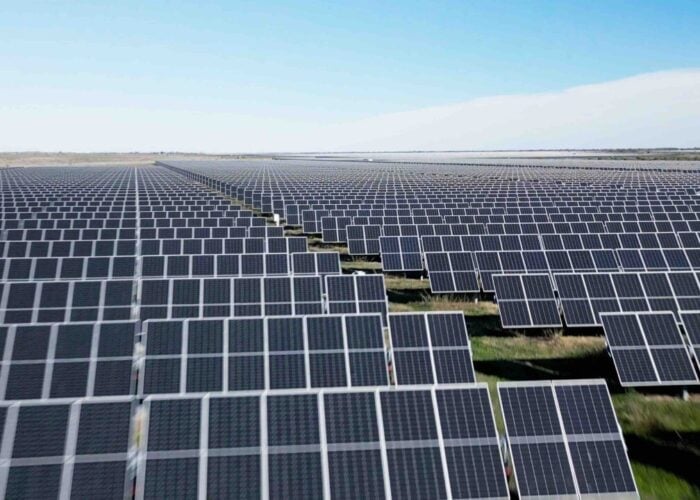
Swedish solar developer OX2 has received development consent from the New South Wales government in Australia for a 90MW solar-plus-storage project.
The Summerville solar-plus-storage site, which is being developed in the Richmond Valley region of the state, around 57km southwest of Lismore, will feature a co-located 90MW/360MWh battery energy storage system (BESS).
Try Premium for just $1
- Full premium access for the first month at only $1
- Converts to an annual rate after 30 days unless cancelled
- Cancel anytime during the trial period
Premium Benefits
- Expert industry analysis and interviews
- Digital access to PV Tech Power journal
- Exclusive event discounts
Or get the full Premium subscription right away
Or continue reading this article for free
It will connect to the New South Wales electricity network and the National Electricity Market (NEM) through a short underground connection to the existing 132kV Lismore to Koolkhan overhead line located to the southeast of the site.
OX2 expects the solar-plus-storage site will begin operations in 2027.
The Summerville project will span 240 hectares, predominantly used for cattle grazing, 3km east of Rappville. It will feature around 215,000 solar PV modules. The BESS will cover 1.9 hectares of land and will act as a large-scale supplier to the grid.
As part of the project, OX2 will provide Richmond Valley Council with approximately AU$3.1 million (US$1.99 million) to deliver infrastructure and community benefits.
Paul Scully, the New South Wales minister for planning and public spaces, emphasised the need to diversify the state’s energy production to help boost energy security and reduce carbon emissions.
“New South Wales is leading a once-in-a-generation upgrade of the electricity network, to deliver even more clean, affordable and reliable energy for everyone in New South Wales,” Scully said.
“Summerville Solar Farm will produce clean energy and bolster the Northern Rivers economy by creating jobs during construction and operational phases.”
Several solar PV power plants are being developed in the Richmond Valley area. One of these is Ark Energy’s 500MW Richmond Valley solar-plus-storage project.
The Richmond Valley solar project will incorporate a co-located 275MW/2,200MWh BESS, making it amongst the largest connected to the NEM. It will be located close to existing transmission infrastructure and has been described as a “great location for solar energy”.
AGL, Risen install Australia’s ‘first’ HJT solar PV modules
Elsewhere in Australia, energy major AGL Energy and Risen Energy have completed the installation of solar PV modules at the Canally solar PV plant in New South Wales.
The two project developers claim the site is the first time in Australia that a utility-scale solar PV plant has featured heterojunction (HJT) solar PV modules, which Risen Energy manufactures.
Specifically, Risen Energy deployed its HJT Hyper-ion Module, RSM110-8-580BHDG, for the 6.5MW solar PV power plant, which also features a 5.1MWh BESS. In total, around 11,000 HJT solar PV modules have been deployed.
The project will reduce Canally Almond Orchard’s diesel consumption by around 85%.
“The completion of module installation at Canally Solar Farm marks a key milestone in AGL’s commitment to investing in innovative and sustainable energy solutions,” said Brendan Weinert, head of sustainable business energy solutions at AGL Energy.
“Partnering with Risen Energy and integrating HJT technology into this project allows us to push the boundaries of performance and efficiency while delivering meaningful environmental benefits for our customer operations and the broader community.”
Although HJT technology is new to the Australian energy market, its benefits are well-known across the global industry.
For instance, the technology offers longer lifespans, high-efficiency, cost-effectiveness, and adaptability. In terms of efficiency, Chinese PV manufacturer Trina Solar claimed a world-record efficiency of 25.44% for a solar total passivation (TOPAS) HJT solar PV module at the start of the year.
The firm had also secured a new record for an n-type Czochralski silicon (Cz-Si) HJT solar cell, achieving an efficiency of 27.08% in December 2024.
Another aspect of HJT technology that could make it appealing to the Australian market is its ability to perform in warmer climates.
While contemporary solar PV technology often sees performance drop gradually above the 25 degree Celsius mark, HJT modules, due to their lower temperature coefficient, are more resilient to heat-related losses and thus can generate more power in hot weather.
Despite the advantages, there are potential drawbacks to HJT technology. According to new research from the University of New South Wales, the presence of “hidden contaminants” in damp heat (DH)-induced degradation in heterojunction (HJT) and tunnel oxide passivated contact (TOPCon) glass-backsheet modules resulted in relative power losses of 10-16% after 1,000 hours of DH testing.






